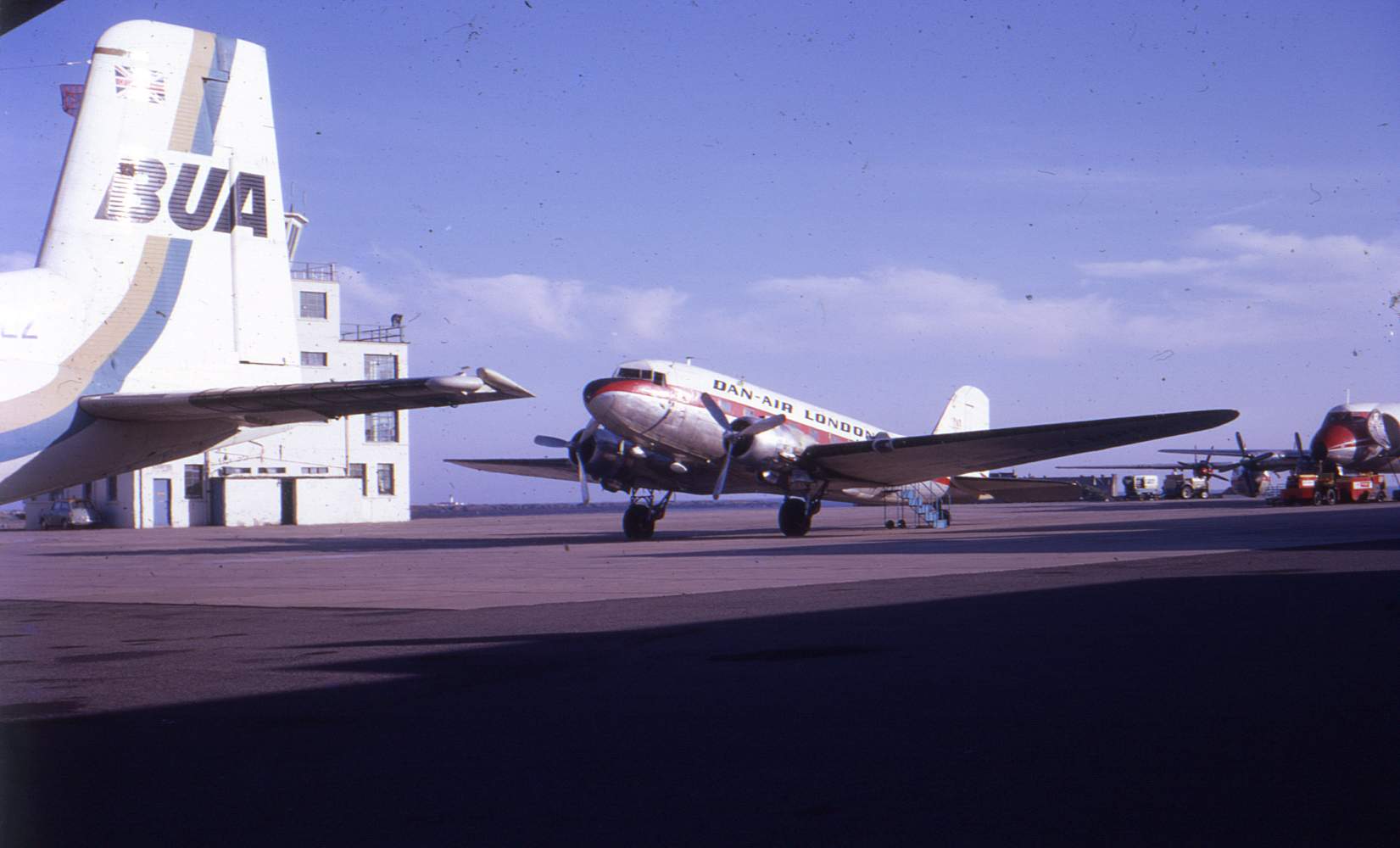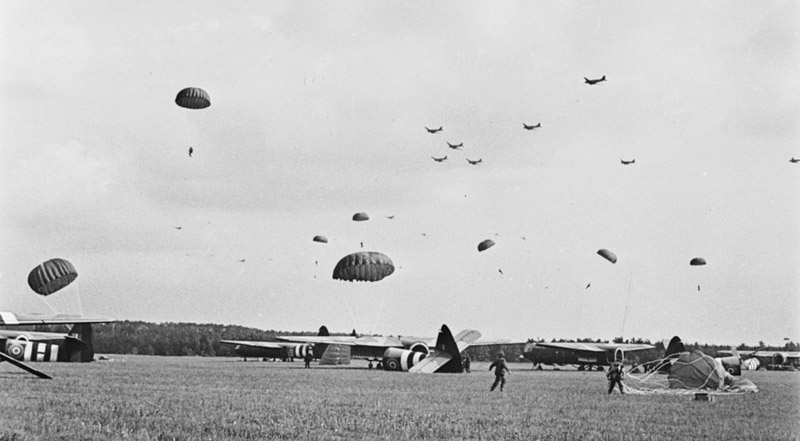
On the night of September 14th, all operational 233 Squadron Dakotas were prepared for forthcoming glider-towing missions. The crews were briefed for the Market Garden operation on Friday 15th and the equipment prepared. Twenty two aircraft and their gliders were marshalled on September 16th ready for the daytime mission the following morning. 233 Squadron’s Horsa gliders were scheduled to carry over 300 troops, 10 jeeps, 15 motorcycles plus miscellaneous guns and hardware to landing zones close to Arnhem. The first aircraft were airborne shortly before 10:00 on a slightly misty autumn Sunday morning. FZ681, piloted by Warrant Officer Ken Cranefield, was aloft at 10:10, heading for the first waypoint at Hatfield, then on to Aldeburgh in Suffolk escorted by a large fighter force. One glider broke free from tow aircraft KG437 over Essex but went on to land safely. The remainder of the Squadron flew on, passing over Orford Ness to start the 100 mile crossing of the North Sea to Schouwen Island in the Netherlands. The turning-point at the eastern end of Schouwen (code-named ‘Bermuda’) marked the start of a 60 nautical mile leg eastwards across the Netherlands to the last waypoint, just south of s’Hertgenbosch. Here, the armada turned north-east for the final approach to the drop zones. The weather remained clear and the daytime operations made for easy navigation above the roads and railways of Holland. Anti aircraft batteries did produce some casualties, but less than expected, and the escorting fighters kept the Luftwaffe away. RAF Typhoons and other ground attack fighter bombers were able to hit troublesome gun batteries effectively. The two Landing Zones, ‘S’ and ‘Z’ , and the parachutists Drop Zone ‘X’ were all secured from 12:40 onwards by men of the Independent Company delivered to Arnhem by RAF Short Stirlings from Fairford. As in Normandy, Eureka beacons were set-up and switched-on ready for the fleet of Dakotas approaching from the south. Gliders were released a couple of miles from the target Landing Zones and, at 2500′-3000′, from a greater altitude than the parachute drop aircraft. The Landing Zones were, variously, harvested corn fields and heather-clad heath terrain with drainage ditches. Inevitably, the latter caused some fatalities amongst glider crews but, in general, this part of the operation was judged to be a success. The C-47s of the USAAF’s 52nd Troop Carrier Wing were tasked with delivering the 1st, 2nd and 3rd British Paratroop Battalions to Drop Zone ‘X’ at Arnhem. 314th Troop Carrier Group arrived first and 61st TCG second (Virginia Ann’s unit – see separate thread under D-Day Squadron menu). The drop was also successful and 61st were back at Barkston Heath by 16:30. After around five and a half hours flying, all 233 Squadron Dakotas had also returned safely to base by 15:46.

233 Squadron were back in the air on the second day of Market Garden with 17 aircraft bound, once again, for Arnhem towing gliders. 46 Group of Transport Command provided a total of 62 aircraft, each towing a Horsa Glider carrying the 1st Air Landing Brigade en route to Landing Zone ‘S’.The Dakotas had all been prepared for the operation overnight but early morning autumn mist delayed the departure of both RAF and USAAF elements of this second lift. Poor communication meant that the ground forces in Holland were not aware of the delay. 233 Squadron’s Commanding Officer, Wing Commander W.E.Coles joined the operation in Dakota KG559 and take-offs commenced at 10:43. Neither Ken Cranefield’s crew nor FZ681 were part of the mission. The original plan had been for the second-lift armada to follow a southern route to Arnhem but poor weather over Belgium led to them following the same route as on the preceding day. Forewarned and forearmed, the German anti-aircraft batteries were more troublesome on September 18th with flak experienced around s’Herzogenbosch, Wageningen and Renkum. One aircraft, KG420, was hit and the Navigator, Warrant Officer Phillips, injured. Once again, a single glider broke away from its tug over Essex and, this time, KG448 flown by Flt. Lt. A.Cody, followed it down to land at Andrewsfield aerodrome, near Braintree. This led to KG448 becoming the only 233 Squadron aircraft to fly on the following day’s Market Garden operations when it delivered the Horsa and its load of 6 troops, one jeep and a machine gun to Arnhem. The flight was no joy ride though; there was no fighter escort and the flak was heavy causing damage to KG448’s port wing and fuselage.
‘Market’ Dakota operations on the 19th were mostly carried-out by other 46 Group squadrons, 512 and 575 from Broadwell, 271 and 48 from Down Ampney. However, 233 Squadron weren’t idle: KG437 departed on a newspaper run to B43/ St.Omer via D59/ Ypres while KG315 made the regular mail run to B6/ Coulombs. FZ669 was also sent to B6 with army freight on the outbound sector and casualties on the return. Several other logistics flights were scheduled to Brussels, B56/ Evere with ‘A’Flight’s CO, Squadron Leader Mackenzie, delivering newspapers in KG531. KG412 transported 2766 lbs of maps for the advancing forces, also to B56, before staging on to B6/ Coulombs with two couriers and mail. A further 13 Dakotas took off from Blakehill Farm carrying petrol for B56/ Evere but, owing to poor weather, seven returned to base to await better conditions. The remaining six set-down at B50/ Vitry-en-Artois and proceded to B56 when the skies cleared. Remaining at brussels overnight, they returned the following day to Blakehill, Down Ampney and Broadwell with evacuated casualties.
The Third Lift to Arnhem, made on 19th, followed the longer southern route via Manston and Ostend. This meant that the aircraft spent more time over allied-occupied Belgium and less over enemy territory. The operation was to have brought-in the entire Polish Independent Parachute Brigade Group plus US Army airfield construction engineers. Poor weather at the USAAF’s Midland airfields led to the postponement of their part of the operation, although some of the Polish forces were flown to Arnhem by RAF aircraft. Four 46 Group aircraft were lost: one each from 575 Squadron and 48 Squadron and two from 271 Squadron. One of the 271 Squadron aircraft was flown by Flt.Lt.David Lord, who was awarded a posthumous Victoria Cross for his selfless dedication to dropping the supply panniers. The second Dakota was flown by Pilot Officer Len Wilson whom many consider should also have been awarded the VC for his attempt to crash his doomed aircraft on a German Flak position. The tragedy of September 19th operations and the sacrifices made by the aircrew was that the Drop Zones had been over-run by German forces and, although the Allies knew that another target should be allocated, they had been unable to communicate this to their High Command. Airborne forces on the ground feverishly tried to message the Transport Command crews, but the airmen had been told to ignore ground signals which were possibly German decoys.
September 20th saw the Fourth Lift of Operation Market with 48, 512 and 575 squadrons providing over 60 Dakotas. The weather remained foggy with low cloud and the aircraft didn’t take-off until around noon. 131 of the RAF re-supply force dropped their supplies successfully, but 33 Stirlings were routed to Landing Zone ‘Z’ which was under Axis control (1). 512 Squadron lost two Dakotas, KG324 and KG418.
233 Squadron was also in action in the early afternoon of 20th, with nine Dakotas lifting from Blakehill Farm en route to B56/ Evere with stretchers, blankets and bedding. On the return sector, 63 casualties plus passengers were returned to Greenham Common and Blakehill Farm. Also on 20th, Ken Cranefield’s crew made the 10 minute hop from Blakehill to Lyneham in KG440 followed by a 135 minute flight to B56/ Evere loaded with 5000 lbs of petrol. KG440 remained overnight at B56 prior to returning with casualties on 21st. KG415 and KG437 also made afternoon flights to Brussels on 20th. Flying Officer Vines in KG415 carried passengers from Northolt to B56 via Blakenberg while KG437 hauled passengers and mail from Northolt to Brussels via B6/ Coulombs. As well as the Dakotas, 233 also despatched a couple of Ansons to B56 carrying blood supplies for the medics.
(1) Much of the detail on Arnhem missions is taken from Martin Middlebrook’s 1994 book ‘Arnhem 1944, the Airborne battle’ published by Viking. ‘Air Battle for Arnhem’ by Alan W.Cooper, published by Pen & Sword Aviation in 2012 contains a lot of detail on aerial operations, particularly the RAF, but is so poorly proof-read and edited that every item of information has to be double-checked. As with the rest of the item on 233 Squadron, the raw history is provided by RAF Operations Record Books – they have been known to have spelling errors and transposition of aerial serials. Useful websites include: www.stormandconquest.blogspot.com for details of airborne operations panniers, baskets and containers. www.pegasusarchive.org and www.aviationart.pl have both provided information and the article on Advanced Landing Grounds on Wikipedia proved extremely useful. Lastly, detail was abstracted from personal flying logs.
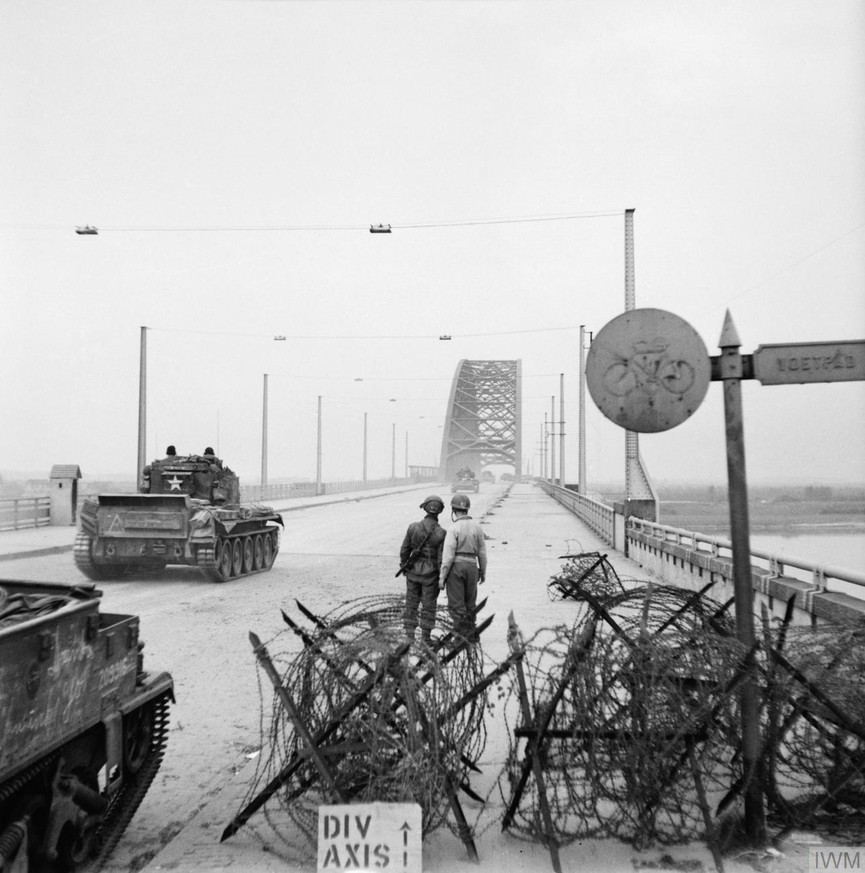
46 Group squadrons were flying again on September 21st with 233 Squadron providing a break for 512 Squadron and the newly-formed 437 Squadron RCAF flying instead of 575 Squadron. 271 and 48 squadrons were both in action again from Down Ampney. While the weather remained patchy over the continent, it had improved over southern Britain and the RAF armada followed the southern route to Holland again via Hatfield, Bradwell and North Foreland. The US forces departing from airfields further north suffered from poorer weather problems and a coded message was broadcast instructing them to return to base. Unfortunately, only 41 aircraft of the 114 C-47s of 314 TCG and 315 TCG received the message and the remaining 73 continued to the drop zone with troops of the Polish Parachute Brigade. The paratroops were dropped reasonably successfully, if a little erratically. The remaining 500 Polish troops were eventually deployed two days later near Grave.
Eighteen 233 Squadron Dakotas took off around 13:00 on 21st September on a re-supply mission to the First Airborne Division. They experienced intense flak over Europe and six aircraft were hit. The Squadron CO, Wing Commander Coles in KG559, was flying with a crew which included the Blakehill Farm Base Commander, Group Captain Kennedy. Damage was sustained in the initial approach to the target but, despite that, William Coles made a second run to ensure that all panniers were dropped to the ground troops. Wireless Operator Flying Officer Sharpe was hit in the thigh by shrapnel, large holes were sustained in the wings and elevators and despatcher Lance Corporal Lance Corporal Ronald Clements was dragged out of the aircraft as a pannier was deployed. Wing Commander Coles decided that the safest option was to divert to B56/ Evere where he landed successfully. Luftwaffe FW190s attacked the Dakotas near Eindhoven and KG433, flown by P.O. Wright, sustained some damage. Three aircraft were lost during the day, KG399, KG566 and KG586, making this 233 Squadron’s worst day of the campaign. KG586 managed to make a controlled crash landing at Bennekom, but the crew of KG566 were all killed. FZ681, flown by Flt Lt A.Cody, had been operational and managed to return to base successfully at 18:34, 5 hours and 22 long minutes after take-off. The Squadron delivered 240 panniers.
Weather conditions were poor on 22nd September and, although ready for re-supply flights, 46 Group received no requests to fly. 233 Squadron did, however, operate some unrelated flights with three Dakotas despatched to Manston to collect 54 Spitfire (fuel) drop tanks for onward delivery to B56/ Evere. Flt. Lt. Cody was, again , at the controls of FZ681 and the crew remained at Brussels overnight, returning to Broadwell via B43/ St.Omer the following morning. A further four 233 Dakotas ferried petrol to B56/ Evere.
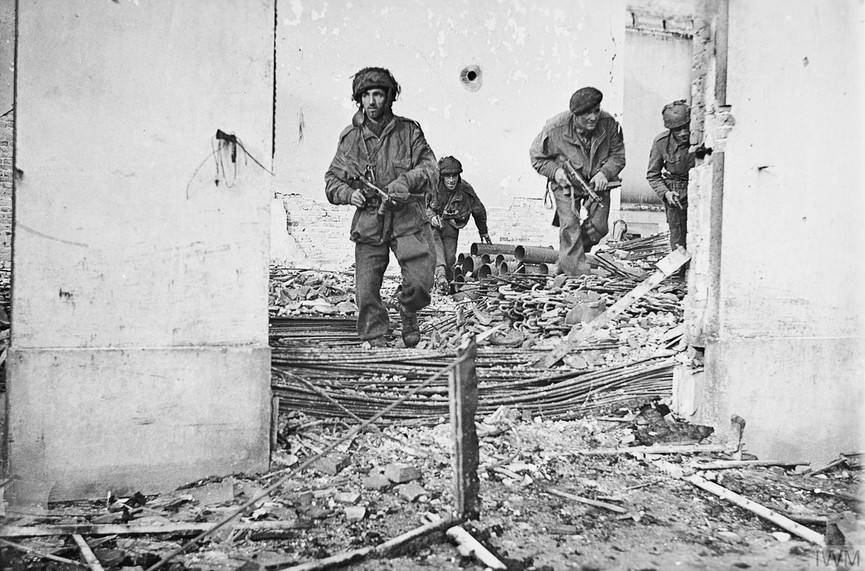
FZ681 returned to Blakehill Farm at 11:42 on 23rd September, just in time for what would be the last mass re-supply mission. The aircraft was loaded ready for a 13:19 take-off as part of a 50-aircraft contingent from 46 Group. Of the 17 Dakotas supplied by 233 Squadron, four had been loaded at Down Ampney and all were carrying panniers destined to be dropped at a zone close to Oosterbeck, to the west of Arnhem. FZ681 was flown by Warrant Officer Ken Cranefield with Flt.Sgt Barry Stableford (RNZAF) as second pilot, Flt. Sgt.Terry Holmes as Navigator and Flt.Sgt D.M.Hastings as Wireless Operator. The dispatchers would have been supplied by the RASC but, as usual, they are not credited in the squadron logs.
In addition to the supply drop, the final force of Polish paratroops was dropped at Drop Zone ‘O’ near Graves by 42 USAAF aircraft which included those of 315th Troop Carrier Squadron. The Polish forces then had to move 30 kilometres north to the 7 kilometre wide strip of land between the Waal and Rhine rivers, close to driel and immediately south of Arnhem. The 564 Polish troops had already had one attempt to land in Holland aborted during the bad weather of 21st September and must have suspected that they were joining a battle which was already lost.
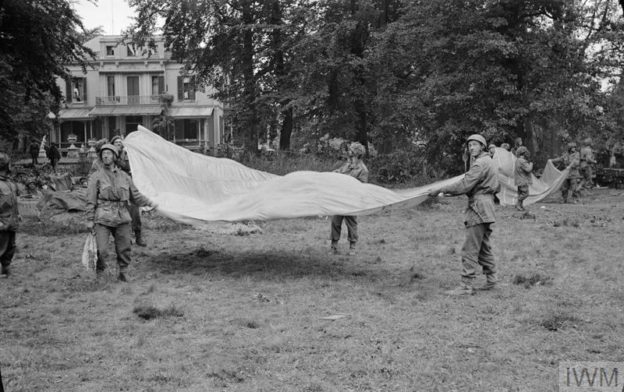
While fighter cover had been restricted on 21st, almost 200 fighters were scrambled on 23rd to keep Luftwaffe fighters at bay. Better weather had also enabled RAF Typhoons and USAAF P-47Thunderbolts to attack enemy ground positions and anti-aircraft batteries. The flak, however, remained fierce for the transport aircraft approaching Arnhem by the ‘southern route’ on the afternoon of September 23rd. The marking of the drop sites had also been compromised by the deterioration of the Eureka homing beacon batteries and the difficulties allied forces had in laying-out markers whilst under constant attack. The Dakota pilots had been told to ignore random signalling, flares and smoke signals from the ground as they were likely to be German decoys. Consequently, quite a large proportion of the 240 panniers dropped by 233 Squadron were immediately captured by the enemy even though fifteen of the seventeen pilots were confident that they had dropped their payload on target. The remaining two Dakotas suffered from shifting loads and had to return to base. One aircraft dropped its panniers alongside an allied convoy rather than at the DZ – as, it turned-out, this was probably a good result. Nine of the Dakotas suffered from Flak damage with Ken Cranefield’s FZ681 being the worst affected. Anti aircraft fire hit the Dakota as it approached the drop zone, punching a 2 foot diameter hole in the starboard wing and damaging the aileron. Flt Sgt Hastings reported to the flight deck ‘Skipper, the starboard wing is on fire!’, but the pilot continued his run-in to the drop. Further hits on the aircraft were said by Ken Cranefield to sound like ‘peanuts raking the length of the fuselage’ and, with razor sharp shards of shrapnel slicing through the cabin, the Captain was hit in his knee and thigh. Although his leg was deeply cut, exposing the bone, and blood was sluicing out, Ken Cranefield knew that Barry Stableford was relatively new to flying Dakotas and elected to stay in command until the drop had been achieved. When clear of the DZ, he handed control to the second pilot while the Wireless Operator and Navigator administered morphine and applied a makeshift tourniquet using a length of microphone flex. The flight back to base remained challenging, with Navigator Terry Holmes assisting Flight Sgt. Stableford to keep the aircraft at a level attitude despite the crippled aileron. Five hours and eleven minutes after departing Blakehill Farm, Barry Stableford brought FZ681 in for a commendably controlled landing at 18:30. Ken Cranefield was transferred to hospital, never to fly actively again, other members of the crew were assigned to training duties to recuperate and it was expected that FZ681 would be reduced to spares. In fact, 681 was repaired and back in the air a day ahead of her crew: she departed Blakehill Farm at 09:32 on October 5th outbound for B56/ Brussels Evere with a load of petrol. Barry Stableford and Terry Holmes, both promoted to Warrant Officers, were airborne in Anson NK664 a day later en route to A47/ Paris via Northolt. Warrant Officer Cranefield was recommended for a DFC by Wing Commander Coles on October 4th, the medal was approved by Air Marshall Coningham on 18th December 1944. Ken Cranefield remained in hospital for many weeks and suffered recurring problems with osteomyelitis (bone infection) for the next ten years. One positive aspect of his hospitalisation was that he met Nurse Marjorie Douglas who became his wife in 1945. Leaving the RAF in 1946, he joined the Civil Service rising to senior positions within the Department of Employment. He revisited Arnhem in September 2014, sixty years after Market Garden, and died on 17th September 2016 at the age of 94 …the same date he flew his first mission to Arnhem in FZ681.
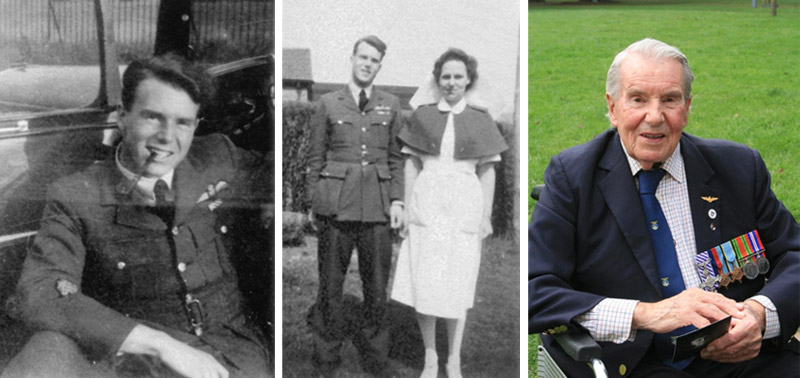
The mission on September 23rd was the final re-supply operation from the UK. Although 233 Squadron had suffered several damaged aircraft, it had been lucky to lose none on the seventh lift. Other squadrons had experienced sustained damage and eight aircraft had been lost, many of them Stirlings of 570 Squadron. 46 Group seconded 21 Dakotas of 575 Squadron to Brussels prior to a resupply mission on 24th. Four of those aircraft made it through to attempt a drop to the 1st Airborne at Arnhem. The drop zone was not clear and two aircraft did not make the drop. The remaining 17 Dakotas of 575’s secondment dropped supplies at Grave and the the 82nd Airborne at Nijmegen. By this juncture, it had been decided by the Allies that the German defensive positions at Veghel meant that Market Garden’s objective of seizing the Rhine Bridge at Arnhem could not be achieved. A further attempt to reinforce the Allied troops at Arnhem on the night of 24th ended in failure and, by nightfall on 25th, the remnants of First Airborne had withdrawn across the Rhine and allied defensive positions were established at Nijmegen. Of the original First Airborne strength of 10,600, almost 1500 were dead and 6400 had been taken prisoner.
Hits: 514
